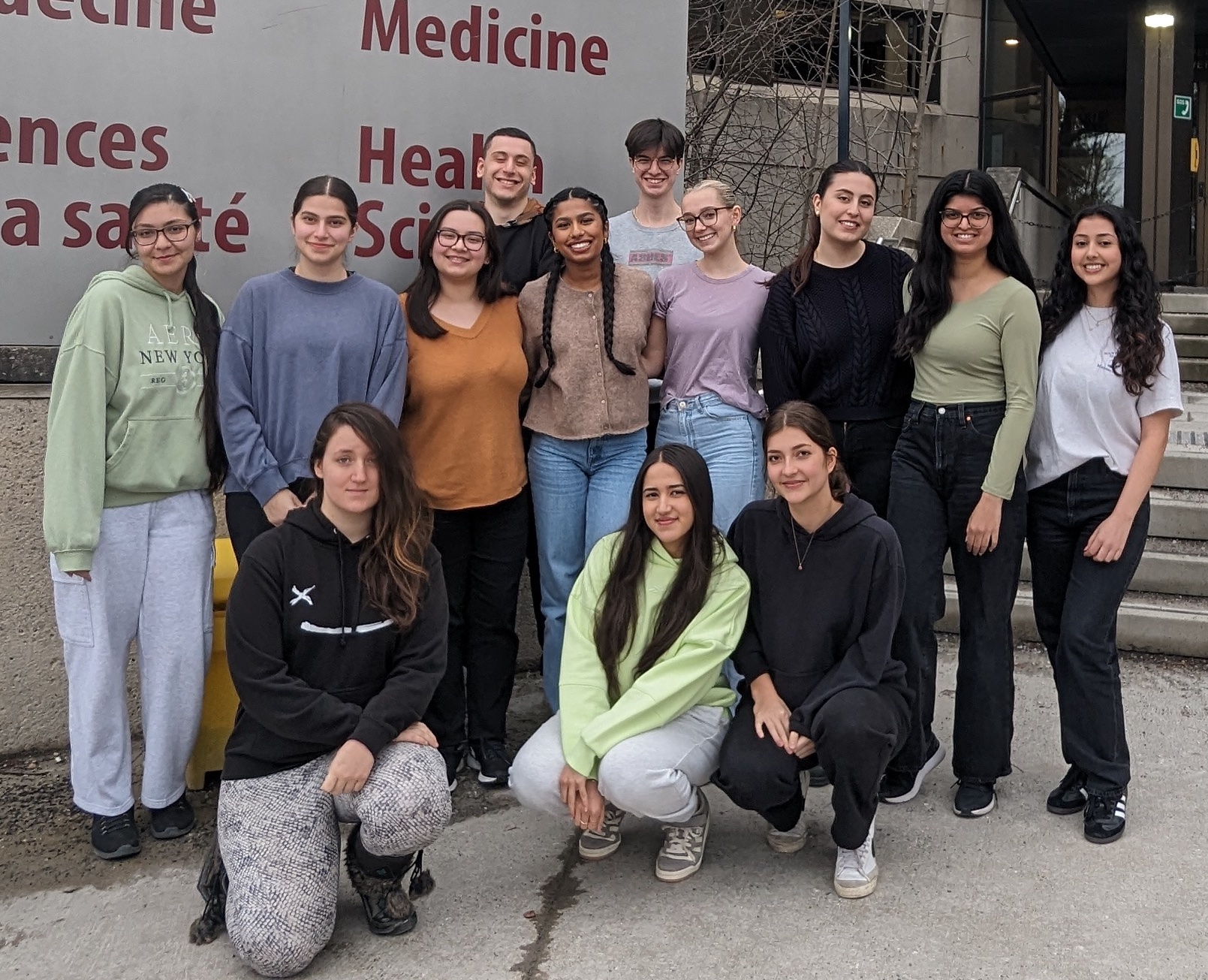Below is a summary of the abstract you submitted. Presenting author(s) is shown in bold.
If any changes need to be made, you can modify the abstract or change the authors.
You can also download a .docx version of this abstract.
If there are any problems, please email Dan at dar78@pitt.edu and he'll take care of them!
This abstract was last modified on March 19, 2024 at 1:56 a.m..

Bacteriophages are viruses that target and kill bacteria. The University of Ottawa’s phage hunters course isolated several Arthrobacter globiformis bacteriophages and among them were the AU6 cluster phages BarbieDoll, Renaldo and Zeina. These phages exhibit siphoviridae morphology, characterized by a long, flexible, non-contractile tail. The tail lengths of BarbieDoll, Renaldo and Zeina are 258nm, 239nm and 232nm respectively.
Zeina was discovered during the Fall of 2020 in a soil sample from a river in Longfields, Barrhaven, infects Arthrobacter globiformis B-2880, and was annotated in 2021.
BarbieDoll and Renaldo were found in Fall 2023 in a soil sample in the ByWard Market and a farm in Gananoque, Ontario, respectively, and infect Arthrobacter globiformis B-2979. The phages are all ~55,000 bp, contain 92 or 93 genes, and have a GC content of ~51%. Annotations of each gene in all three bacteriophages were done through the use of numerous applications including, PECAAN, Phamerator, NCBI Database, HHpred, DeepTMHMM and PhagesDB GeneMark File. We are currently finalizing the annotations of BarbieDoll and Renaldo.
When investigating the AU6 phages, we have analyzed two potential tail assembly chaperone (TAC) genes that lie upstream of the tape measure gene. The TAC genes have not yet been annotated in the AU6 cluster, but recent work on cyanophages suggests that the first gene is a TAC. The second gene is in the same frame as the first, so AU6 phages would be unable to encode a long TAC gene using a programmed translational frameshift, and instead would have to employ a mechanism of stop codon readthrough. We are investigating this possibility by testing if a long TAC protein is produced in an E. coli expression system.
Additionally, AU6 phages are unique in encoding a VRR-Nuc domain This domain contains a DNA repair nuclease with endonuclease activity and has the ability to repair DNA interstrand crosslinks. BarbieDoll, Renaldo and Zeina also contain a PnuC-like Nicotinamide riboside transporter protein that facilitates the uptake of nicotinamide riboside across cellular membranes for the conversion into NAD+ for immunity defense.
For future investigations, BarbieDoll, Renaldo, and Zeina will be subjected to host range assays to test if there is specificity for infection of A. globiformis B-2880 vs. B-2979. While creating webbed plates of these phages we noted that a distinct large plaque morphology arises at low frequency. We have purified these large plaques and shown they maintain this morphologic change suggesting these phages may contain mutations that increase their virulence. The relationship of Renaldo, BarbieDoll and Zeina to other cluster members will be assessed using comparative genomic techniques and the predicted structures of NKF genes in Renaldo will also be explored using AlphaFold2.

